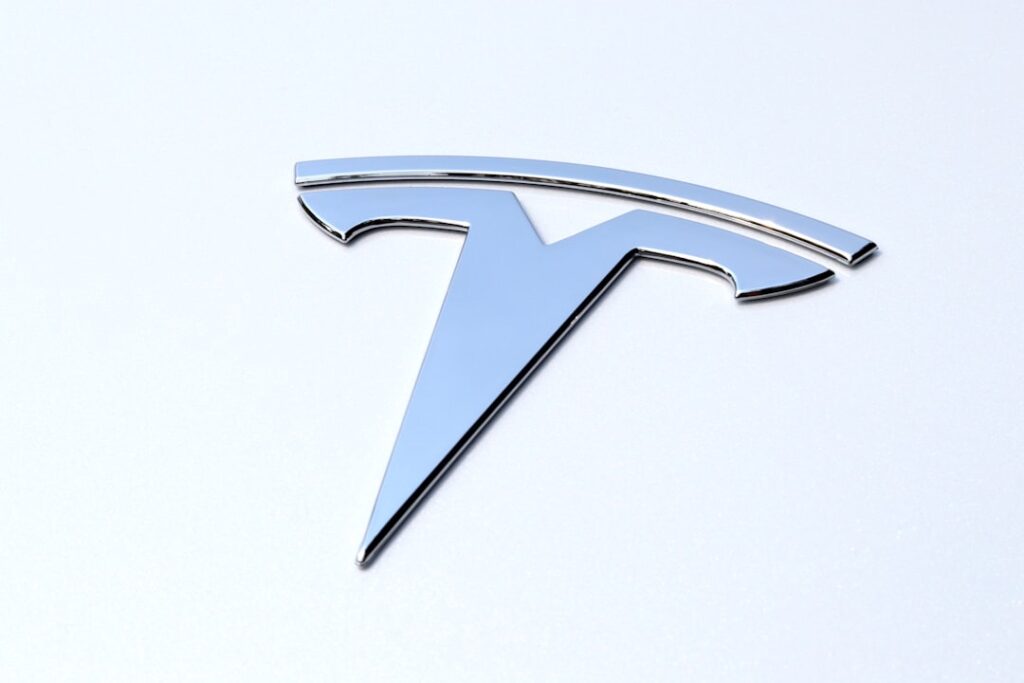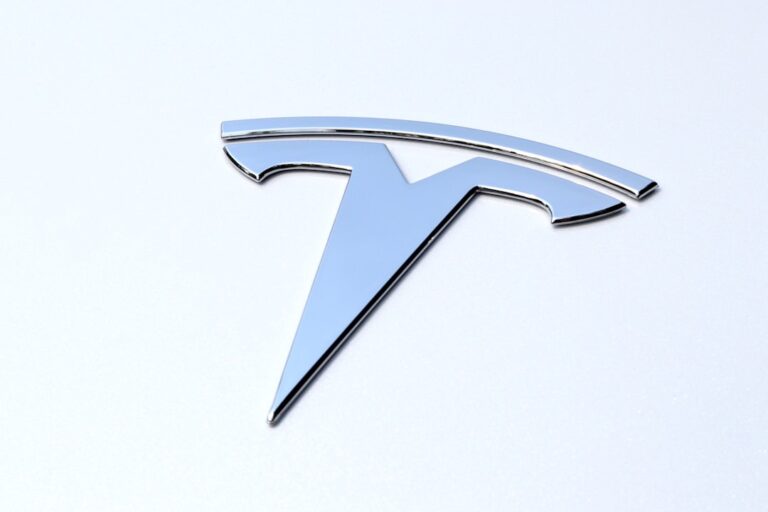
Tesla’s stock has experienced significant volatility in recent months, with shares trading at $262.87 as of the latest market data, representing a slight daily decline of 0.22%. The electric vehicle pioneer continues to face mounting challenges from competitive pressures and margin compression, while bullish analysts point to upcoming innovation catalysts that could potentially revitalize the stock. This comprehensive analysis examines Tesla’s current market position, fundamental strengths and weaknesses, and the divergent perspectives shaping its investment outlook.
Current Market Position and Recent Performance
Tesla shares have experienced a dramatic decline in recent weeks, particularly following the U.S. presidential inauguration in January 2025. On January 21, the day after President Trump’s inauguration, Tesla stock was trading at approximately $424. At current levels around $258, this represents a substantial 39% decline over a mere six-week period1. This sharp correction has significantly impacted investors, with an investment of £10,000 made after inauguration day now worth just £6,100, or closer to £5,700 when accounting for foreign exchange movements1. The stock’s current price of $262.87 reflects a minor daily decrease, trading between a range of $250.73 and $266.25.
Today’s trading pattern shows growing momentum, with the stock price climbing steadily from $252.30 at 11:59 AM to the current level of $262.87, suggesting some potential stabilization after the recent decline. This performance comes against the backdrop of Tesla’s broader trading range, which has fluctuated dramatically from a 52-week low of $138.80 to a high of $488.54. With 3.22 billion shares outstanding and a massive market capitalization of approximately $845.5 billion, Tesla remains one of the most influential companies in both the automotive and technology sectors despite recent challenges.
The recent price decline represents a significant correction in Tesla’s valuation, yet must be understood within the context of the company’s historically volatile trading pattern. According to analysis from Trefis, Tesla has experienced ten significant dip events (defined as greater than 30% declines within 30 days) since 20102. Historically, these dips have often presented buying opportunities, with data indicating that Tesla has returned an average of 131% in the year following such dips, with peak returns averaging 183%2. However, investors must consider whether current fundamental challenges make this situation different from previous corrections.
Fundamental Challenges and Valuation Concerns
Tesla’s financial fundamentals have shown concerning deterioration in recent periods, contributing significantly to investor skepticism. Perhaps most alarming is the dramatic downward revision in earnings expectations. Analysts have drastically reduced 2025’s earnings per share forecast to just $2.85, representing a staggering 66% reduction compared to estimates from two years ago and a 12% decline from mid-January projections1. Similarly, revenue estimates have been revised downward by $4.3 billion to $112 billion, indicating expectations of slower growth than previously anticipated1.
One of the most significant challenges facing Tesla is the compression of its profit margins. Operating margins have contracted dramatically from a peak of 16.8% in 2022 to just 7.2% in 2024, with the fourth quarter of 2024 showing further deterioration to 6.2%1. This margin erosion reflects intense pricing pressures in the electric vehicle market and Tesla’s ongoing struggle to maintain profitability while pursuing its affordability objectives. The situation in automotive gross profit is particularly concerning – in Q4 2024, Tesla generated $3.29 billion in automotive gross profit, less than it produced in Q3 2021 ($3.67 billion) despite delivering twice as many vehicles1. This dramatic efficiency decline explains why Tesla’s earnings power has weakened despite increasing delivery volumes.
Adding to investor concerns are indications of potential insider selling, with reports that three Tesla insiders – including CEO Elon Musk’s brother Kimbal – have planned significant stock sales for 2025 worth approximately $300 million1. While these planned sales were scheduled in advance and may reflect personal financial planning rather than outlook concerns, such actions inevitably impact market sentiment. The timing of these planned sales during a period of declining fundamentals has only intensified investor apprehension.
Despite the recent pullback in share price, Tesla’s valuation metrics remain extraordinarily high compared to both automotive peers and most technology companies. The current price-to-earnings ratio stands at approximately 128.86 based on the company’s trailing earnings per share of $2.04. While this represents a discount to Tesla’s five-year historical average P/E of 138 times, it remains dramatically higher than most competitors in both the automotive and technology sectors1. This premium valuation creates significant downside risk if Tesla fails to deliver on growth expectations or if competition further erodes its market position.
Bull Case: Growth Catalysts and Innovation Pipeline
Despite these fundamental challenges, Tesla supporters point to several potential catalysts that could drive a significant recovery in the company’s fortunes. Wedbush analyst Daniel Ives remains particularly bullish, recently adding Tesla to the firm’s “best ideas list” with a $550 price target, suggesting potential upside of over 100% from current levels4. Ives has specifically shrugged off concerns regarding CEO Elon Musk’s political involvement and cryptocurrency interests (DOGE), estimating that less than 5% of Tesla’s global sales are at risk due to these factors4.
The Trump administration’s regulatory approach may provide a favorable tailwind for Tesla. Wedbush sees the potential for a more lenient regulatory environment that could accelerate the company’s autonomous vehicle ambitions, representing a significant competitive advantage4. This political backdrop could create more favorable conditions for Tesla to advance its technological edge in areas that represent the most promising growth avenues.
Several near-term product developments could significantly influence Tesla’s trajectory. The company is expected to launch a sub-$35,000 electric vehicle before summer 2025, potentially stimulating demand growth and supporting progress toward Tesla’s two million annual delivery target4. Additionally, the planned June launch of unsupervised Full Self-Driving (FSD) technology in Austin represents a critical milestone in Tesla’s autonomous vehicle strategy4. Wedbush estimates that Tesla’s self-driving technology alone could be worth $1 trillion based on sum-of-the-parts valuation methodologies4.
The company’s long-term innovation pipeline extends beyond vehicles into robotics, with the ongoing development of Optimus (the Tesla Bot), a general-purpose humanoid robot. Wedbush’s analysis suggests that autonomous technology and Optimus combined will account for approximately 90% of Tesla’s future valuation4. This perspective frames Tesla less as a traditional automotive manufacturer and more as a multi-faceted technology company with diverse revenue streams in emerging high-growth sectors.
Analyst Perspectives and Price Targets
The investment community remains deeply divided on Tesla’s prospects, with analysts offering widely divergent outlooks. Wall Street consensus currently reflects a “Hold” rating on the stock, with 14 Buy, 11 Hold, and 10 Sell recommendations in recent months4. The average price target stands at $351.48, suggesting a potential upside of approximately 33.4% from current levels4.
However, individual analyst targets vary dramatically, reflecting the uncertainty surrounding Tesla’s future. Wedbush’s Daniel Ives maintains a particularly bullish outlook with a $550 price target, suggesting more than 100% upside potential4. In contrast, Baird analyst Ben Kallo recently lowered the firm’s price target from $440 to $370, citing short-term challenges for Tesla’s Q1 deliveries and maintaining a more cautious outlook4.
Longer-term forecasts for 2025 show similar divergence. TradersUnion projects a price range between $284.20 and $322.36 for the year, based on expectations of expanding sales and production capacity but acknowledging competitive threats3. LongForecast maintains a moderately bullish outlook through 2025, citing growing electric vehicle demand, innovations, higher production efficiency, and new model releases as potential drivers3. However, they also note potential downside risks including execution problems, production delays, increased competition, and broader market downturns3.
Notably, most forecasts depend heavily on Tesla’s ability to maintain its technological edge while effectively managing the transition to mass-market production. In the first half of 2025, various analysts project Tesla’s stock price to range from $214.73 to $342.42, with an average expected price of $324.413. These projections incorporate assumptions about Tesla’s market performance, EBITDA margins, and the broader electric vehicle market dynamics.
Competition and Market Challenges
Tesla’s dominant position in the electric vehicle market faces increasing pressure from established automotive manufacturers and new entrants. Traditional automakers have accelerated their electric vehicle programs, committing substantial resources to narrow Tesla’s technological lead. Perhaps more concerning is the growing threat from Chinese manufacturers who have made significant inroads in both their domestic market and European territories5. These competitors often offer compelling products at lower price points, putting additional pressure on Tesla’s pricing strategy and market share.
The competitive landscape has contributed to Tesla’s need to reduce prices, which has directly impacted profit margins. As more manufacturers enter the premium electric vehicle segment, Tesla’s ability to command premium pricing has diminished. This trend appears likely to continue, potentially forcing further margin compression or market share erosion. The dilemma facing Tesla is whether to prioritize market share growth through competitive pricing or maintain margin discipline at the potential cost of slower growth.
Tesla also faces challenges related to public perception and leadership focus. Protests against Elon Musk have emerged, with a “TeslaTakedown” demonstration reported outside a Tesla dealership in New York on March 1, 20255. While the direct sales impact of such actions may be limited, they reflect broader concerns about brand perception. Additionally, Musk’s involvement in multiple ventures beyond Tesla, including SpaceX and his political activities, has raised questions about his focus on Tesla’s core business during this critical period1.
Conclusion: Navigating an Uncertain Future
Tesla stands at a pivotal juncture, facing significant challenges while simultaneously pursuing transformative innovations that could redefine its business model. The recent stock decline reflects legitimate concerns about fundamental performance, margin compression, and intensifying competition. However, dismissing Tesla’s potential for recovery would overlook its established pattern of resilience following significant corrections and its substantial pipeline of upcoming technological advancements.
For investors, the Tesla investment thesis requires balancing these competing factors. The current valuation, while lower than recent peaks, still embeds expectations of substantial future growth and margin recovery. Achieving these expectations will require successful execution on multiple fronts, including the introduction of more affordable vehicle models, advancement of autonomous driving technology, and strategic management of competitive threats.
Elon Musk has characterized 2025 as Tesla’s “most pivotal year,” highlighting the critical importance of the company’s execution in the coming months1. With potential catalysts including the sub-$35,000 vehicle launch and the Austin FSD rollout, Tesla has opportunities to reinvigorate investor confidence. However, continued margin pressure or delays in these initiatives could further undermine the bull case.
In this environment of heightened uncertainty, investors should carefully assess their risk tolerance and investment horizons before taking positions in Tesla stock. While historical patterns suggest the potential for significant returns following major dips, the fundamental challenges currently facing Tesla appear more substantial than in previous correction periods. Navigating this complexity requires a nuanced understanding of both the risks and opportunities shaping Tesla’s future in an increasingly competitive electric vehicle landscape.
Citations:
- https://www.fool.co.uk/2025/03/07/10000-invested-in-tesla-stock-after-inauguration-day-is-now-worth/
- https://www.trefis.com/stock/tsla/articles/563188/is-it-time-to-buy-tesla-stocks-dip/2025-03-07
- https://www.litefinance.org/blog/analysts-opinions/tesla-stock-price-prediction/
- https://www.tipranks.com/news/tesla-tsla-stock-lands-on-best-ideas-list-as-wedbush-shrugs-off-doge-musk-concerns
- https://www.cnn.com/2025/03/06/business/musk-trump-tesla-shares-slide/index.html
- https://coincodex.com/stock/TSLA/price-prediction/
- https://ir.tesla.com/press
- https://www.youtube.com/watch?v=Y1mAqlWtzxs
- https://www.cnbc.com/2025/03/07/wall-streets-top-stocks-by-analysts-friday.html
- https://www.cnn.com/2025/03/06/business/video/egan-musk-wallstreet-tesla-stock-digvid
- https://longforecast.com/tesla-share-price-predictions-2017-2018-2019
- https://www.cnn.com/markets/stocks/TSLA
- https://www.youtube.com/watch?v=lir2_cELtEM
- https://io-fund.com/consumer-tech/supply-chain/tesla-has-a-demand-problem-the-stock-is-dropping
- https://finance.yahoo.com/news/tesla-tsla-best-stock-buy-115413754.html
- https://www.nasdaq.com/market-activity/stocks/tsla/news-headlines
- https://www.ttnews.com/articles/tesla-erases-trump-bump
- https://www.barchart.com/story/news/31273983/analysts-buy-tesla-stock-on-the-dip-until-june-2025
- https://www.cnbc.com/quotes/TSLA
- https://www.barrons.com/articles/tesla-stock-price-upgrade-8e131933
